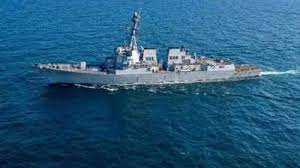The Defence Research and Development Organization (DRDO) has approached the Cabinet Committee on Security (CCS) for approval of the Advanced Medium Combat Aircraft (AMCA) to be developed for the Indian Air Force (IAF).
As of now, the design of the stealth fifth-generation stealth, multirole combat fighter has been has finished by the Aeronautical Development Agency (ADA). The first prototype of GE-414 powered AMCA is expected to roll out by 2026.
The IAF is expected to induct at least 7 squadrons of AMCA in future.
Notably, the combat aircraft It is expected to be produced by a public-private joint venture between the DRDO, Hindustan Aeronautics Limited (HAL), and an Indian private company.
The development cost is estimated to be around Rs 15,000 crore ($2 billion).
About AMCA
The AMCA is a twin-engine, stealth supersonic multi-role fighter designed for the IAF.
At present, the AMCA is planned as a fifth-generation fighter but will integrate emerging, best of breed sixth generation technologies over time. will be a single-seat, twin-engine aircraft.
The AMCA Mark 1 will come equipped with 5.5 generation technologies, while the Mark 2 will have the incremental 6th generation technology upgrades.
The AMCA is intended to perform a multitude of missions including Air supremacy, Ground-Strike, Suppression of Enemy Air Defenses (SEAD) and Electronic Warfare (EW) missions.
It is intended to be a potent replacement for the Sukhoi Su-30MKI air superiority fighter with the IAF.
Features:
- Shaping for Low-Observability
- Internal Weapons
- Signature Control
- Materials/Paints
- Future Missiles
- Stand-Off Weapons
- Precision Weapons
- Vehicle Management
- Integrated Modular Avionics
- Situational Awareness
- Data Fusion· Decision Aids
- Advanced Sensors
- Net Centric warfare
- Appropriate EW
Weapons:
Air to Air:
- Close Combat Missile
- Beyond Visual Range Missile
Air to Ground:
- Joint Direct Attack Munitions
- Precision Guided Munitions
Sensors:
- AESA Radar
- Infra Red Search & Track
Multi Mission Capabilities:
- Air – Air
Long Range Combat-
- Low Radar Signature
- Extended Detection
- Range & Targeting
- Supersonic Persistence
- High Speed Weapon
- Release
Short Range Combat
- Low Infra-Red Signature
- Fast Change of State (Thrust Vectoring)
- High Angle of Attack Controllability
- All Round Missile Warning System
2. Air – Ground
Short Range Combat
- Suppression of enemy Air Defense
- Precision Strike
- Special Missions
- Non-Stealth Mission
- Mariti Swing Role
Specifications Source: https://www.ada.gov.in/ada/advanced-medium-combat-aircraft.html
General characteristics (Likely):
Crew: 1
Length: 17.6 m (57 ft 9 in)
Wingspan: 11.13 m (36 ft 6 in)
Height: 4.5 m (14 ft 9 in)
Wing area: 55 m2 (590 sq ft)
Empty weight: 12,000 kg (26,455 lb) (estimated)
Gross weight: 18,000 kg (39,683 lb)
Max takeoff weight: 25,000 kg (55,116 lb) (estimated)
Fuel capacity: 6,500 kg (14,300 lb)
Payload: 6,500 kg (14,300 lb) ― 1,500 kg (3,300 lb) internal and 5,000 kg (11,000 lb) external stores
Powerplant: 2 × Modified GE F414 (initial production) afterburning turbofan
Performance (Likely):
Maximum speed: 2,600 km/h (1,600 mph, 1,400 kn)
Maximum speed: Mach 2.15
Range: 3,240 km (2,010 mi, 1,750 nmi)
Combat range: 1,620 km (1,010 mi, 870 nmi)
Ferry range: 5,324 km (3,308 mi, 2,875 nmi)
Service ceiling: 20,000 m (65,000 ft)
Specification Source: https://en.wikipedia.org/wiki/Jane%27s_All_the_World%27s_Aircraft


